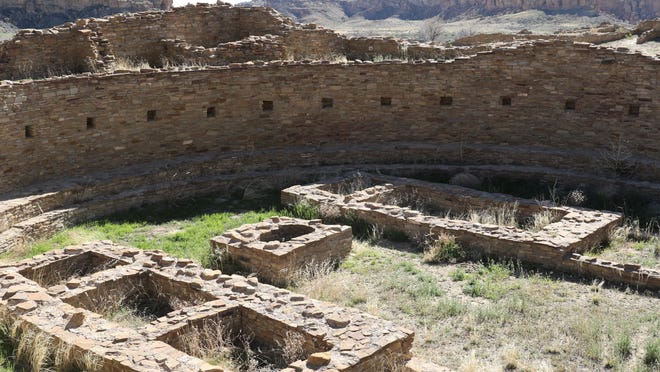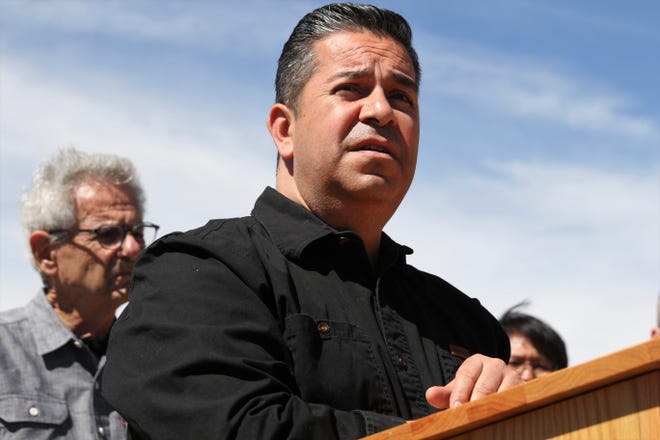Legislation proposed to end extraction leases near Chaco Culture National Historical Park
 John R. Moses
John R. Moses
FARMINGTON – Four Democratic members of the state’s congressional delegation reintroduced legislation Nov. 17 to create the Chaco Protection Zone, which would formalize a 10-mile buffer zone around Chaco Culture National Historical Park under consideration by the Bureau of Land Management.
U.S. Senators Ben Ray Luján (D-N.M.) and Martin Heinrich (D-N.M.), and U.S. Representatives Teresa Leger Fernández (D-N.M.) and Melanie Stansbury (D-N.M.) signed on to the Chaco Cultural Heritage Area Protection Act
“This legislation will prevent future leasing and development of oil, gas, and minerals on federal lands that are located within a 10-mile buffer zone around the park,” according to a news release on Nov. 11. “This proposed Chaco Protection Zone will preserve the ancestral sites and cultural patrimony within Chaco Canyon and the surrounding landscape.”
BLM held two meetings in recently, one in Farmington and one in Bernalillo, to gather comments and review a proposed 20-year ban on such leasing.
“Since I was elected, protecting Chaco Canyon’s precious environmental and cultural resources has been my top priority,” Lujan said. “After leading a successful effort to pass my legislation in the House, I’m proud to reintroduce legislation in the Senate to continue those efforts to preserve this sacred landscape that has been the center of so much history and heritage for Pueblos and Tribes in New Mexico.”

The sponsors said the legislation would “codify protections for private, state, and Tribal entities, including Navajo allottees, ensuring that existing rights are preserved as the area is protected.”
“My team and I have continued meeting with all rights holders and local groups and listening to the surrounding communities impacted,” Lujan continued. “With such important historical and cultural significance, my legislation ensures the Greater Chaco Region will be permanently protected and preserved for generations to come.”
Leger Fernández said she has listened to Pueblo and Navajo leaders as well as Navajo allottees potentially affected by this legislation.
“Simply put, Chaco Canyon and the Greater Chaco region are special, especially for the many Indian Tribes and Pueblos that revere and hold it sacred, she said in the release. “From the multi-story buildings that are still standing to the many roads and communication sites that are still visible, these lands’ cultural resources and history are irreplaceable.”

She said she will ”continue to listen with an open heart.”
Also listening – and speaking out – is the Greater Chaco Coalition, which hailed the legislation as a positive first step.
“Though the Coalition supports this legislation, more needs to be done to address the cumulative impact of extractive industries on the Greater Chaco Landscape and its communities,” the group said in an email released the afternoon of Nov. 17.
“Though there is widespread support for protecting cultural resources and public health beyond the proposed 10-mile buffer, the Bureau of Land Management (BLM) continues to rubberstamp industrialized fracking across the region, with more than 90% of the landscape already leased for oil and gas,” the email said. “By the Bureau’s own analysis, the proposed mineral withdrawal will have minimal impact on oil and gas extraction – reducing gas production only 0.5 percent, and oil production a mere 2.5 percent.”
The email said the Greater Chaco Coalition Coordinating Group is composed of impacted community members and local leaders, Diné Citizens Against Ruining our Environment, Pueblo Action Alliance, San Juan Citizens Alliance, Sierra Club Rio Grande Chapter, the Center for Biological Diversity, WildEarth Guardians, and Western Environmental Law Center/
“While the Chaco Cultural Heritage Protection Act is a step in the right direction, much broader measures are needed to protect communities, public health, and the climate from the cumulative and widespread impacts of oil and gas extraction on the Greater Chaco Landscape,” the Coordinating Group’s statement read. “This region has been treated as a sacrifice zone for far too long. It’s time for federal and state agencies and elected leaders to live up to their promises and take meaningful steps to permanently protect the Greater Chaco Landscape as a whole, putting Tribes, Pueblos, and impacted communities first.”